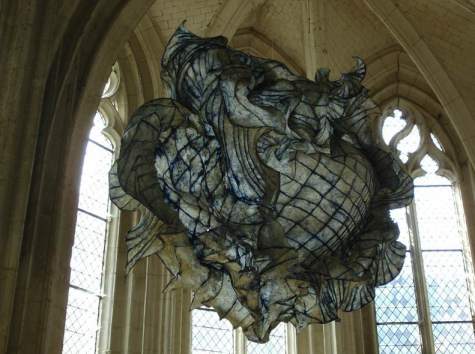Series: Artists’ who are Modernizing the Fine Arts
Peter Gentenaar was born in the Netherlands in 1946. As a young child Peter was involved in many arts. When he was young many of his drawings were bloody and extreme designs of battleships and cars. In high school he was then introduced to puppet theater where he found his new passion. In his adult years he continued his artistic abilities by joining a variety of classes like drawing, painting, sculpture and printmaking. He soon graduated with a master’s degree in printmaking and built a business out of it and produced many works of figurative color lithographs. Yet after a few years, Gentenaar wanted to continue trying new things and he began to experiment with his crafts. In the late 1990’s Peter was introduced to paper art forms and instantly became invested. He found that the manipulation of paper to be fascinating and quickly changed his whole perspective on paper. His work and passion are inspired my nature and many other paper sculptors. When in the process of making a piece, he tries to recreate the likeness of a leaf from nature. He says, “My inspiration is a bud, which, in spring, unfolds into a leaf. A compact folded form feeds itself with water and turns into a great spacious form. In autumn this leaf falls of the tree, the water evaporates and a small web of fibers curling around the spine is the end of this form.”  His work is truly an inspiration to the art world and paper construction. His works offer different perspectives and emotions through the different ways he manipulates the paper. Gentenaar uses a variety of paint that he bleeds into the paper pulp which then give his large sculptures their desired glaze appeal. All the paper sculptures he makes are independent but have very engaging interactions with their surroundings. Many of which hang from high ceilings and shift with the movement of the air. Gentenaar was unsatisfied that paper was only seen in one dimension, his hopes were that the work he produced would shift the perspectives of paper and prove that there are many more dimensions to the reusable material.
His work is truly an inspiration to the art world and paper construction. His works offer different perspectives and emotions through the different ways he manipulates the paper. Gentenaar uses a variety of paint that he bleeds into the paper pulp which then give his large sculptures their desired glaze appeal. All the paper sculptures he makes are independent but have very engaging interactions with their surroundings. Many of which hang from high ceilings and shift with the movement of the air. Gentenaar was unsatisfied that paper was only seen in one dimension, his hopes were that the work he produced would shift the perspectives of paper and prove that there are many more dimensions to the reusable material.


